Stone, minerals and semiprecious of the world stone
Silicate: Datolite -->rus
 Diagnostic cart.
Diagnostic cart.
On a photo. Large crystals of datolite, painted in colors from white to light red.
Ca B OH SiO4
Crystal structure monoclinic
Hardness on the Mohs scale 5-5,5
Specific unit weight mass 2,9-3
Cleavage non-existent
Fracture, break wrong, padman, fragile frail brittle
Colors colourless, white, yellow, gold, green, red
Colors in powder triturate white
Glance (glitter, glare) glassy, fat
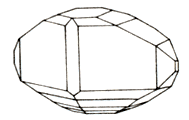
Presented short crystals, sometimes large sizes, by rich verges. Not uncommon, however, and porcelain-like aggregates of the short-grained and massive addition. Colouring can either absent or change from white to rather yellow, greenish and even light red. Glance (glitter, glare) at the datolite of glassy with a tendency to fat; a fracture is a padman.
Chemical composition (chemistry, compound). Kemidol (CaO) 35%, oxide of the coniferous forest (B2O3) 21,8%, silex (SiO2) 37,6%, water (H2O) 5,6%. Crystal structure. Monoklinnaya: crystals are characterized plenty of verges. Class of symmetry. Prismatic - 2/m. Aggregates. Grainy. Cleavage. Absents.
Diagnostic indication.
Fuse melt in flame of candle, painting him in a green color. Easily dissolves in strong acids. Easily alloyed in transparent glass. A behavior is in acids. Decomposes in HCl.
Origin provenance genesis.
Mineral of hydatogenesis; often be found in emptinesses among serpentinite and rocks, poor a silica, such as basalt ragstone, melafire and diabase, dolerite. Marked also in some rocks of granit row.
Deposit minefield mine and use.
Datolite - widespread mineral. In Italy it be found in the amygdales of chalcedony in Ticce near-by Ch'yuza, in area of Alto-Adidje, in geode of rose granite in Baveno near-by a lake major Lago-Major, in an area P'emont. This mineral often be found also in Serra-zaketti (a province Bolon'ya), in Montekatini in Val'-di-chechina and in Kasarca (an area Liguriya). It be found in Tyrol and USA, where his opaque differences use as carpentry stone, cutting him as protuberant cabochons. If a datolite forms large beds, it is developed as raw material for the receipt preparation of the coniferous forest and paints, applied at making of porcelain.
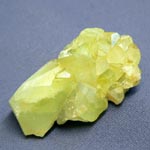
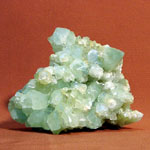
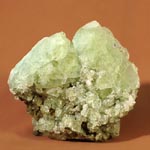
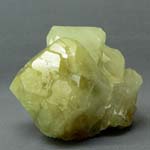
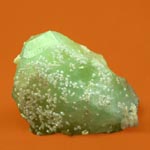

Datolite. Borosilikatnoe mine, Dal'negorsk, Seashore, Russia, CIS. Crystal ~20 sm. A photo: © A.A. Evseev.
The coniferous forest behaves to the immunotoxic elements. It is considered that a top limit of average daily, safe dose of consumption of the coniferous forest for a people is 13 mgs. The coniferous forest is synergist of chlorine, strengthens the action of the concentrated alcohol and some antibiotics. The risk of development of deficit of vitamin of D rises at the deficit of the coniferous forest. The coniferous forest is braked by suction of ascorbic acid, flavonoids, sulfur-containing amino acid an organism. Application of the coniferous forest is described for forcing of copper out of organism. It is an element in a prophylaxis and treatment of osteoporosis.
At surplus of the coniferous forest in an organism observed: loss of appetite, nausea, vomiting, watery chair, dehydration of organism, pouring out and decorticating of skin, decline of sexual activity, worsening of spermogram. Supersaturating the coniferous forest results in a psilosis, to polymorphic dry erythema and anaemias which pass at normalization of level of the coniferous forest. The oxide of the coniferous forest and ортоборная acid behave to the drastic toxic matters. finding on air, muddy compounds coniferous forest, causes the irritation of nasopharynx (pharyngonasal cavity) and eyes. Researches show that at breathing in air with contamination compounds of the coniferous forest the defeat of lights develops.
At the use into the coniferous forest there is an irritation of gastroenteric highway in enhanceable concentrations. At the protracted influence of compounds of the coniferous forest violation of processes of digestion is acquired by chronic character ("boric enteritis develops"), there is boric intoxication, which can stagger a hepar, buds, cns. In researches the negative affecting of the coniferous forest was exposed genesial function both for masculine individuals (decline of making of spermatozoa and development of atrophy of testicle) and at womanish in the process of pregnancy (toxic action on embryo - with the origin of defects at new-born).
The coniferous forest can get in an organism at a skin contact with Cosmetology, containing compounds of the coniferous forest (hysteria began XXI century ), and with washings matters (their advertising and publicity). In food the coniferous forest is contained as a decahydrate tetraborate of natrium sodium and boric acid (it is manganese not "crystals", not permaganate potassium). Compounds of the coniferous forest are selected with urine. The coniferous forest plays a substantial role in the exchange of carbonhydratess and fats, row of vitamins and hormones, influences on activity of enzymes.
In the organism of people the coniferous forest is needed in microdose for maintenance of the healthy state of bones, processes of metabolism of calcium, phosphorus and magnesium. The coniferous forest is instrumental in prevention of postmenopausal osteoporosis, strengthens muscles, improves the functions of brain, promotes vital tone. The coniferous forest is needed: the coniferous forest is instrumental in the prophylaxis of postclimacteric postmenopausal osteoporosis and growth of muscular tissue.
